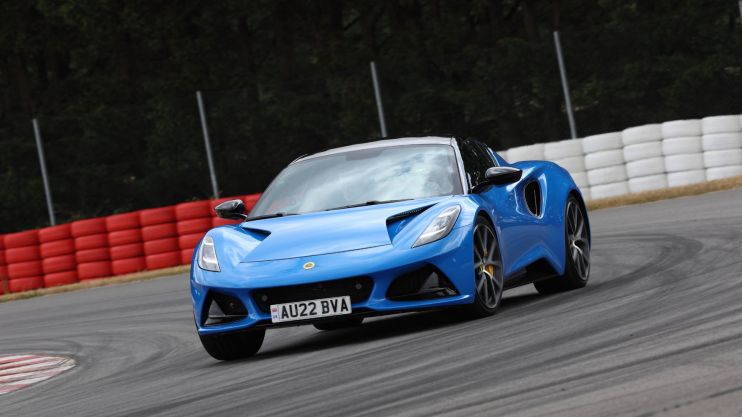Lotus Emira V6 review: Driving the half-price supercar

Mum always said Uncle Stuart was a bit flash. I just thought he was cool. Anyway, one afternoon in 1987, he took me for a spin in his Lotus Excel. Fire-engine red with pop-up-headlights, it seemed dizzyingly fast and unfathomably exotic. This was the first time I’d been in a sports car. And you never forget your first time.
The home of Lotus in Hethel has felt like sacred ground to me ever since. Turning right off the A11 then left into Potash Lane elicits the same goosebumps as driving along the Via Alfredo Dino Ferrari into Maranello.
I’ve visited several times over the years, but today it looks transformed: a small city of lights illuminating the flat Norfolk countryside.
Dawn of a new era

Passing through security, the signs of unprecedented investment are everywhere. A new factory has sprung up to build the Emira, next to another vast hall for the Evija electric hypercar. There’s a restaurant owned by local celeb Delia Smith and a gleaming new showroom dotted with classic Lotus cars. The citrus yellow 1976 Esprit with orange and green tartan trim is, frankly, a bit flash – yet so very cool.
The Emira sits at a crossroads: the first Lotus since the Chinese takeover (parent company Geely also owns Volvo and Polestar) and the last with a petrol engine. The new electric era begins with the Eletre SUV, followed by a smaller SUV, a saloon to rival the Porsche Taycan and a sports car co-developed with Alpine.
Priced at £75,995 in First Edition guise, the Emira’s 406hp supercharged V6 drives the rear wheels via a six-speed manual gearbox. Standstill to 62mph takes just 4.3 seconds – quicker than a Porsche Cayman GT4 – but a DIN kerb weight of 1,361kg looks a bit lardy; an Alpine A110 weighs around 1,100kg.
Handling by Hethel

Still, many people will write a cheque based on the Emira’s styling alone. It resembles a seven-tenths-scale Evija, with dramatic composite panels wrapped around the mid-mounted engine and bonded aluminium chassis. If you didn’t know, you’d swear it was a six-figure supercar.
Inside, the Emira is very different to a skeletally basic Elise or Exige. Instead of ‘Simplify, then add lightness’, you’ll find cupholders, carpeted door pockets and heated seats. The dashboard borrows some Volvo switchgear (no bad thing), with a digital driver display and an intuitive 10.25-inch central touchscreen. A useful luggage shelf behind the seats supplements the modest rear boot.
Lotus offers two chassis setups: Touring or Sport. My car had the latter, which brings stiffer suspension and semi-slick Michelin Cup 2 tyres. This being December, however, the press office had fitted winter-friendly Goodyear rubber. Probably for the best.
The Emira feels taut and resolutely tied-down, while its excellent damping and delicate, throttle-adjustable balance provide an absorbing – and very Lotus – sense of flow. There’s constant communication through the squared-off steering wheel, too. Like McLaren, Lotus has retained old-school hydraulic assistance. It’s calm and confident: a natural ally on near-frozen British B-roads.
A complete sports car

In the long Lotus tradition, the Emira remains a ‘chassis’ car, with the engine as a supporting act. The Toyota V6 is certainly effective, but its gruff, rather workmanlike voice isn’t as exotic as a howling Porsche flat-six. I’m not wholly convinced by the notchy and slightly ponderous manual gearshift either.
Perhaps the forthcoming four-cylinder Emira, with a 365hp Mercedes-AMG engine and rapid-fire paddle-shift transmission, will be the one to have.
Nonetheless, this is the most complete Lotus ever and a reassuring reminder that, even with the electric revolution already underway, Hethel hasn’t forgotten its past. The Cayman GTS is a more rounded sports car and, for now, still the default choice at this price, but the Emira seems more special – and I love the idea of owning a Lotus. Evidently I haven’t forgotten my past either.
Tim Pitt writes for Motoring Research
PRICE: £75,995
POWER: 406hp
0-62MPH: 4.3sec
TOP SPEED: 180mph
FUEL ECONOMY: 25.0mpg
CO2 EMISSIONS: 258g/km